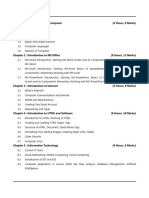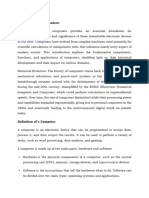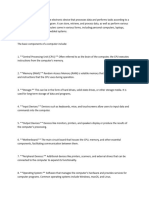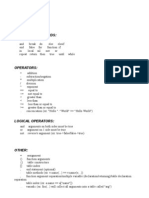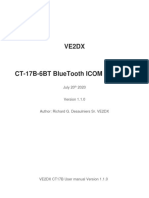0% found this document useful (0 votes)
11 views2 pagesFundamentals of Computer System
A computer system integrates hardware, software, data, and users to process information through the Input-Process-Output cycle. Key components include the CPU, memory, and input/output units, while types of computers range from supercomputers to personal devices. Understanding these fundamentals is essential for recognizing how computers function and their applications in daily life.
Uploaded by
Nishant KeshavCopyright
© © All Rights Reserved
We take content rights seriously. If you suspect this is your content, claim it here.
Available Formats
Download as PDF, TXT or read online on Scribd
0% found this document useful (0 votes)
11 views2 pagesFundamentals of Computer System
A computer system integrates hardware, software, data, and users to process information through the Input-Process-Output cycle. Key components include the CPU, memory, and input/output units, while types of computers range from supercomputers to personal devices. Understanding these fundamentals is essential for recognizing how computers function and their applications in daily life.
Uploaded by
Nishant KeshavCopyright
© © All Rights Reserved
We take content rights seriously. If you suspect this is your content, claim it here.
Available Formats
Download as PDF, TXT or read online on Scribd
/ 2










































